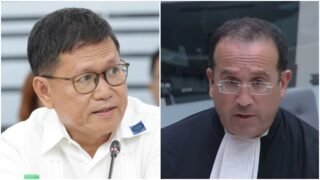THIS REFERS to the news report titled “Solons back Metro traffic measure” (Front Page, 8/11/16).
During the Senate hearing last Aug. 10, Transportation Secretary Arthur Tugade talked like the supreme commander in charge of traffic management in Metro Manila. Perhaps President Duterte has already designated his former law classmate in San Beda College to take charge of addressing the “traffic crisis.”
But unless the President issues an administrative or executive order to put Tugade in charge of the traffic crisis, his department’s mandate covers only the management, operation and maintenance of airports, seaports, railroads and mass transport systems, such as the LRT and MRT; the licensing of motor vehicles through the Land Transportation Office; and the regulation of public utility vehicles through the Land Transportation Franchising and Regulatory Board.
Tugade talks of measures that will take a long time to accomplish. There are only five months left of 2016. As we write, it’s been six weeks (June 30-Aug. 11) since the Duterte administration assumed office. Until now it has not come up with any specific plans, such as what it can do immediately with the damaged portions of C-5 between Pasig and Taguig.
Indeed President Duterte needs emergency powers from Congress to put up long-term measures that would effectively address the traffic crisis. But it will take months before these powers can be granted, and even longer before the needed measures become operational. Before long, it would be Christmas again. and the traffic woes we suffer daily in Metro Manila can only become worse.
For starters, what is needed for now is a “unified, central command” for traffic management in the National Capital Region (NCR). This should be composed of the Department of Transportation and Communications, Department of Public Works and Highways, Department of Interior and Local Government, Department of Justice, and the Metropolitan Manila Development Authority. The central command can be chaired by Tugade.
The Duterte administration should not wait for the emergency powers that it is asking from Congress. There are many things that can be done immediately to improve the traffic flow in the metropolis (e.g., a simple asphalt overlaying of the 50-meter damaged section along C-5 [southbound] in Taguig; effectively addressing the traffic congestion in the area). Enforcement of traffic rules and regulations can be done using the Philippine National Police-Highway Patrol Group and a greater number of trained traffic enforcers.
My take on the matter of long-term solutions to the metropolitan traffic problem, about which I have written in my BusinessWorld column in the 1990s, is for the national government agencies not to get involved in the NCR, so they can concentrate on their jobs outside Metro Manila. What we need here are competent people with engineering and/or management expertise in such fields as public infrastructure, transportation and traffic management.
—RICARDO B. RAMOS, executive director, InfraWatch (Citizens Infrastructure Integrity WatchDog)


